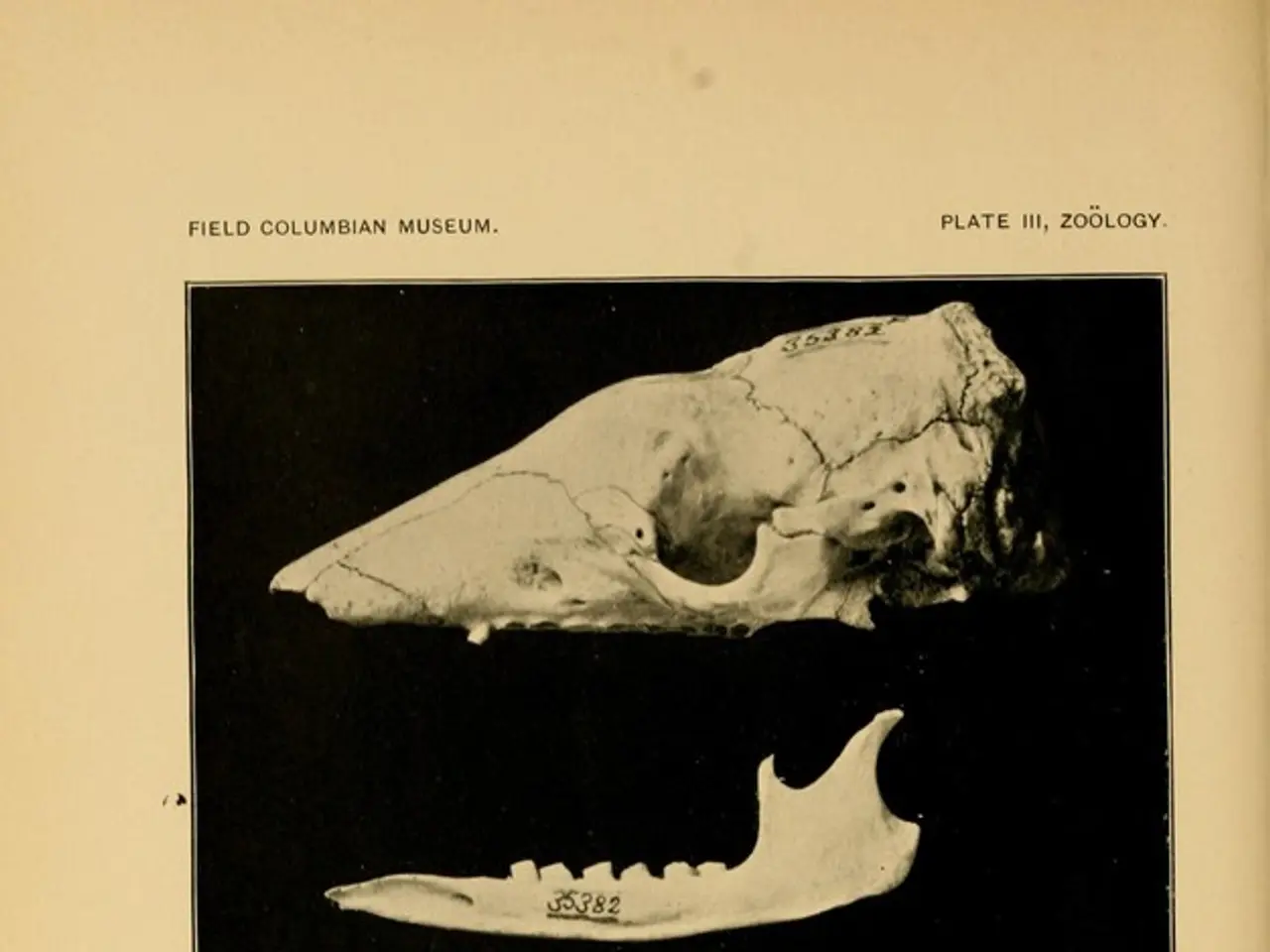Psoriatic arthritis linked to sacroiliitis: Understanding symptoms, diagnostic methods, and additional aspects
Understanding Psoriatic Arthritis (PsA) and Sacroiliitis
Psoriatic arthritis (PsA) and sacroiliitis are autoimmune conditions that can cause inflammation and pain in the joints.
PsA: A Peripheral Joint Condition
PsA is a chronic autoimmune condition that primarily affects peripheral joints such as those in the knees, ankles, feet, and hands. However, it can also impact other joints, including the sacroiliac joints in the lower back. The condition is characterized by joint pain, swelling, and stiffness, often asymmetric and affecting peripheral joints. PsA can also present with psoriatic skin and nail changes, fatigue, and generalized inflammation. Enthesitis (inflammation at tendon or ligament insertion sites) and dactylitis (swelling of entire fingers or toes) are common in PsA.
Sacroiliitis: An Axial Condition
Sacroiliitis, on the other hand, primarily affects the sacroiliac joints (SIJs) connecting the lower spine to the pelvis. It causes inflammatory back pain, stiffness, and sometimes radiating pain to the buttocks and legs. Sacroiliitis is a hallmark of axial spondyloarthritis (axSpA), which can overlap with psoriatic arthritis in the axial form (axial PsA).
Overlap and Differences
Both PsA and sacroiliitis can involve sacroiliac joints and cause inflammatory back pain. Enthesitis and dactylitis may occur in both conditions as part of the spondyloarthritis spectrum. However, PsA typically affects peripheral joints, while sacroiliitis primarily involves the axial skeleton - sacroiliac joints and spine. The primary pain location in PsA is asymmetric peripheral joints, while sacroiliitis causes inflammatory back pain centered on the SIJs and lower back. Skin manifestations are present in PsA, but usually absent in sacroiliitis unless part of a broader spondyloarthritis.
Treatment Options
Treatment for both conditions involves a combination of medications, physical therapy, and lifestyle changes. For PsA, anti-inflammatory medications such as Non-Steroidal Anti-Inflammatory Drugs (NSAIDs) are used to relieve pain and stiffness. Conventional disease-modifying antirheumatic drugs (cDMARDs) like methotrexate and biologic DMARDs (bDMARDs) targeting specific immune pathways are also used. Lifestyle approaches including exercise, stress reduction, and some natural remedies like turmeric may help symptom management. Topical treatments for psoriatic skin symptoms are also used.
For sacroiliitis, NSAIDs are the first-line treatment for inflammation and pain. Physical therapy and regular exercise focusing on maintaining spinal mobility are key components. Biological therapies such as TNF inhibitors and IL-17 inhibitors are effective in controlling axial inflammation. Treatment guidelines for axial PsA are mostly adapted from axSpA management, though specific protocols are being developed due to differences in disease features.
If a doctor suspects someone has sacroiliitis, they may apply pressure to the affected joints, ask about a person's medical history and symptoms, or administer anesthetic to the sacroiliac joints. Treatment for sacroiliitis may also include avoiding activities that cause or worsen pain, muscle relaxers, physical therapy, steroid injections, radiofrequency ablation, and surgery to fuse the joint. Other causes of sacroiliitis include osteoarthritis, ankylosing spondylitis, pregnancy, traumatic injury, and infection.
If a person is experiencing persistent pain, swelling, and stiffness in the joints, it is recommended that they contact a doctor as soon as possible. If a doctor suspects someone has PsA, they may refer the person to a rheumatologist. Symptoms of PsA include stiffness, swelling, pain, tenderness in one or more joints, swelling in fingers and toes, reduced range of motion, stiffness that worsens in the morning, pain and redness in the eye, changes in nails, psoriasis in some cases, and fatigue.
- In addition to the joints they primarily affect, both Psoriatic Arthritis (PsA) and sacroiliitis can cause chronic inflammation, a characteristic of chronic diseases, in the sacroiliac joints, highlighting the need for proper health-and-wellness management.
- A naive understanding of PsA might categorize it as a simple skin condition, but it is a complex chronic autoimmune disease, affecting mental-health due to the persistent pain and fatigue.
- Treatment for PsA often includes a combination of medications like NSAIDs, cDMARDS, and bDMARDS, as well as lifestyle changes and topical treatments for psoriatic skin symptoms, demonstrating the importance of science in managing medical-conditions like chronic diseases.
- Sacroiliitis, unlike its counterpart, usually doesn't exhibit psoriatic skin and nail changes, even though it shares some symptoms like inflammatory back pain and stiffness with PsA, emphasizing the unique nature of each condition.
- Despite offering similar treatment options for sacroiliitis and PsA, such as NSAIDs and physical therapy, their primary treatment guidelines are different due to the unique impact on specific joints and symptoms, underscoring the importance of accurate diagnosis in health-and-wellness care.




